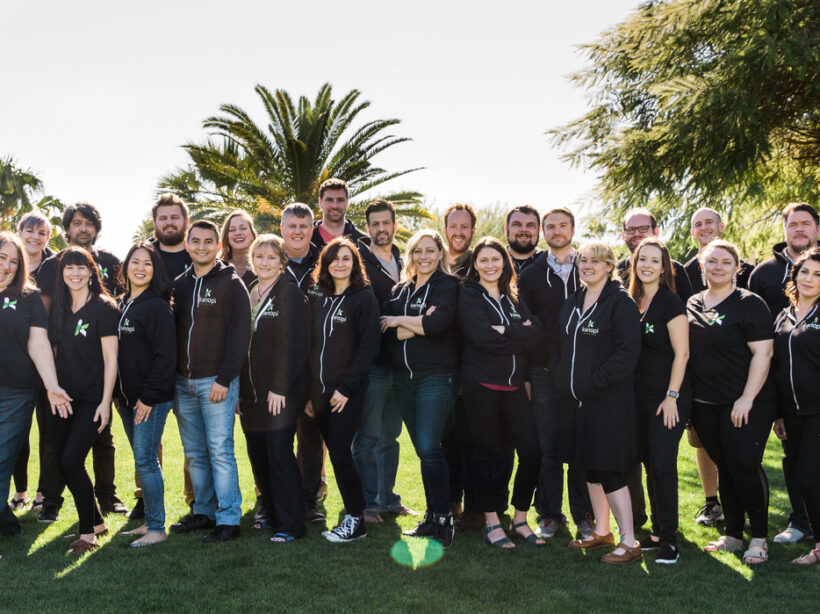Here’s a question we occasionally hear from new and prospective clients:
Why do we need to invest in discovery and content strategy?
These clients believe that a fresh design and upgraded functionality are all that’s needed to improve the user experience and achieve their website goals.
Fortunately, there’s a short, straightforward answer to this question:
Because the goal of a redesign is to get the website you really need — not just a prettier, faster version of the one you already have.
Of course, there are always those clients that still require a bit more convincing. We don’t mind this at all, since it allows us to dive into our long-version answer that includes a surprisingly relevant analogy about a weird house.
Creating an effective website takes more than fresh design and code.
Gaining deep insights about your users, their behaviours, and the needs and desires that motivate them isn’t some extraneous, value-added luxury item. If you’re serious about meeting your website goals, investing in discovery and content strategy is absolutely critical.
After all, you don’t want a Winchester Mystery House.
Located in San Jose, California, the Winchester Mystery House is an architectural curiosity built by the heiress to the Winchester rifle fortune. While we won’t delve into its bizarre and spooky history, we mention it here as a real-world example of what happens when you try and build something with no master plan. Constructed continuously from 1886 to 1922, the sprawling mansion ended up as a maze of 160 rooms, with staircases leading to nowhere, doors that open into walls, and all manner of mismatched design elements.
Without a clear plan that includes discovery, websites can become just as chaotic — with disjointed navigation, unclear messaging, and features that frustrate rather than guide users. We see this happen more often than we’d like. (Usually, we’re the ones called upon to fix it.)
Successful sites begin with discovery.
Discovery lays the groundwork for a successful website by providing you with a comprehensive understanding of your audience and goals. Our discovery process integrates two essential research methods:
- Quantitative research involves analyzing search trends and website analytics to reveal measurable patterns and behaviours — a.k.a. the ‘what.’
- Qualitative research engages internal interest-holders and listens to external audiences to learn as much as possible about their underlying motivations and needs — a.k.a. the ‘why’ — behind these patterns.
By incorporating both strategies, we gain both data-driven clarity and human context, creating a strong foundation for your site’s success.
(If you’re curious to learn more, this post explains more about our discovery process and why we value both ‘Q’ methods equally.)
Critical next steps: Content Strategy and UX Design
Discovery’s ultimate purpose is to guide you in creating an intelligent content strategy that ensures your messaging is clear, persuasive, and aligned with your goals. Effective content strategy also drives engagement, helping you connect with your audience.
With a solid content strategy in place, the User Experience (UX) designers now have something to build on. Smart UX design ensures the site is easy to navigate, accessible, and seamless. Wireframes and prototypes transform strategy into a user-friendly structure that meets both user needs and your organization’s goals.
Only after all this does the visual design start — and again, this means that if you skip discovery, every step that follows will be misinformed. Or, to borrow that old accountant’s adage: Garbage In, Garbage Out.
A strategic investment for long-term impact
As with most long answers, this one ends up at the same conclusion as the short version — that discovery and content strategy are not optional extras. They’re the difference between a website that offers little more than visual appeal and one that serves its true purpose. Especially for nonprofits, where resources are limited, discovery and content strategy help ensure your website becomes a tool for real change.
Don’t forget SEO! We gave a webinar about it.
Ready to Boost Your Website’s Performance Without the Overwhelm? A must-attend webinar for business owners, marketers, and anyone looking to make SEO work smarter, not harder. Lauren Chervinski gave a webinar focused on SEO called “SEO Survival Kit: 5 Steps to Thrive Now and in the AI Era .” (47 minutes)










